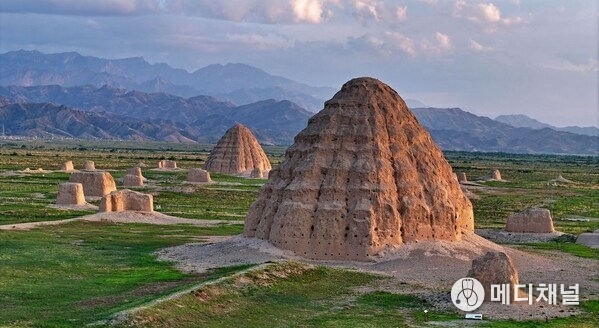BEIJING, July 17, 2025 -- The Xixia Imperial Tombs were inscribed on the World Heritage List on July 11 during the 47th session of the UNESCO World Heritage Committee in Paris, France. This marks China's 60th World Heritage site.

Located at the foot of Helan Mountain in Yinchuan, northwest China's Ningxia Hui Autonomous Region, the Xixia Imperial Tombs represent the largest, highest-ranking, and best-preserved archaeological remains of the Xixia Dynasty (1038-1227).
The heritage area encompasses nine imperial mausoleums, 271 subordinate tombs, one architectural complex at the northern end, and 32 flood control facilities.
Through nearly half a century of excavation, over 7,100 exquisite artifacts have been unearthed, including a gilded bronze ox and a glazed Chiwen. These findings vividly showcase the features of Xixia civilization.
The UNESCO World Heritage Committee recognized the Xixia Imperial Tombs as an outstanding testament to multicultural fusion.
Their spatial layout, design philosophy, and architectural forms inherited the Tang (618-907) and Song (960-1279) dynasties' imperial mausoleum systems while integrating Buddhist beliefs and ancient local ethnic customs. This created unique funerary traditions and demonstrated the dynasty's significant role in cultural and commercial exchanges along the Silk Road during the 11th to 13th centuries.
The Chinese government's tremendous efforts and outstanding achievements in protecting the cultural heritage of the Xixia Imperial Tombs were highly commended by the Committee.
Since being designated as a National Key Cultural Relics Protection Unit in 1988, the site has established comprehensive laws, regulations, and a management system.
Particularly since 2000, in collaboration with professional institutions, 60 major reinforcement projects have been successfully implemented on the tombs themselves. These have essentially eliminated instability risks and surface erosion issues affecting the imperial mausoleums and main subordinate tombs.
Furthermore, the removal of approximately 100,000 square meters of buildings and modern facilities within the heritage zone, combined with the establishment of a comprehensive monitoring and early-warning platform, has effectively ensured the site's authenticity, integrity, and preservation environment.
International scholars point out that the Xixia Imperial Tombs serve as crucial physical evidence for studying ancient ethnic relations, architectural arts, and funerary traditions in China. Their successful inscription enriches the diversity of global cultural heritage.
Original link: https://en.imsilkroad.com/p/346640.html

